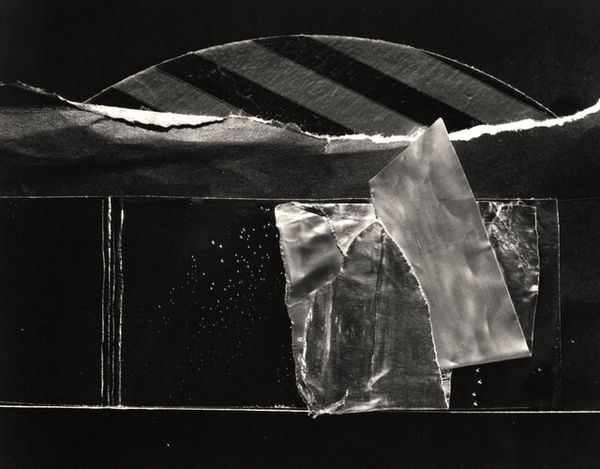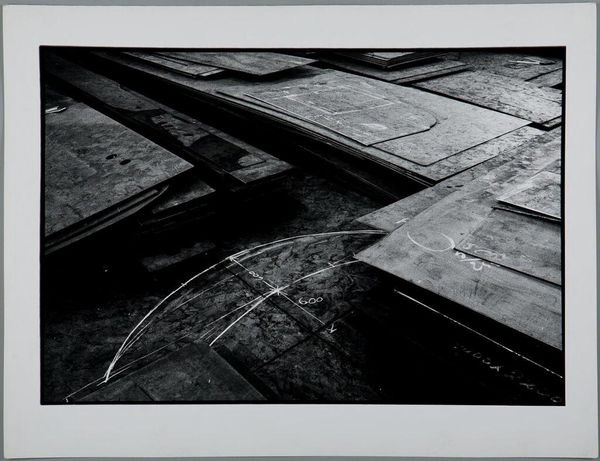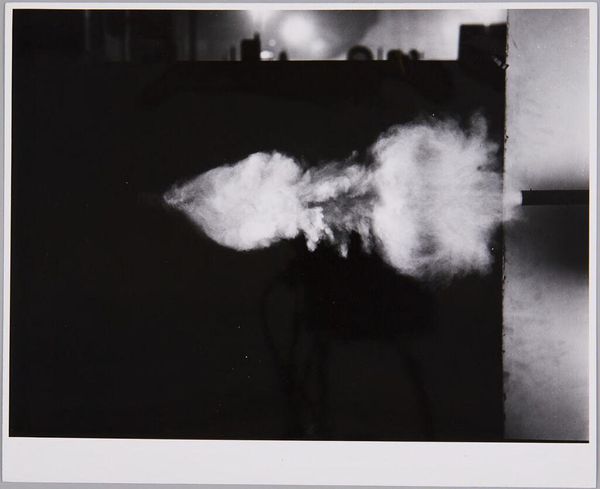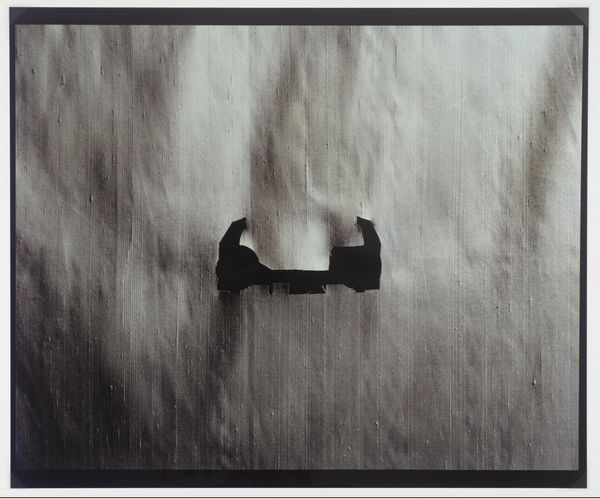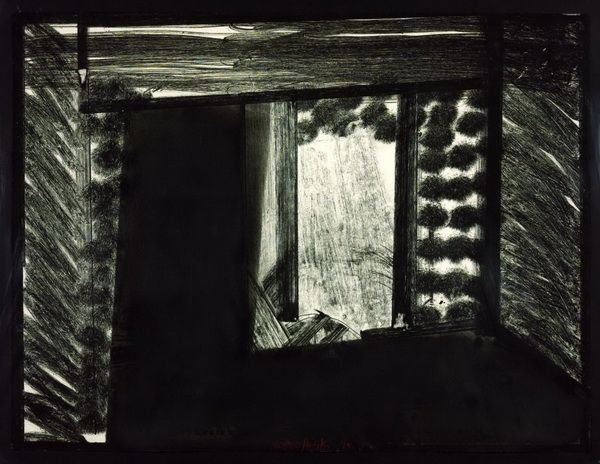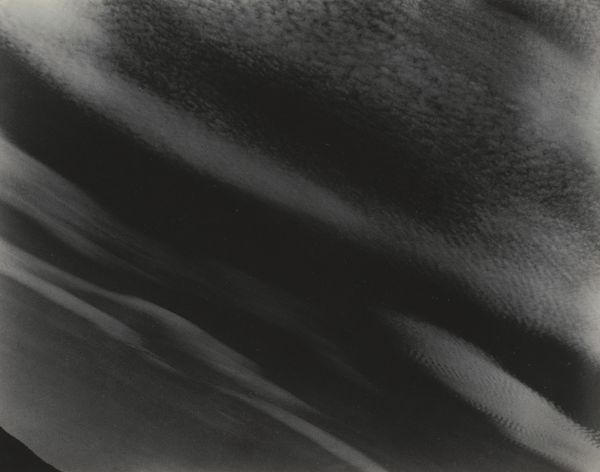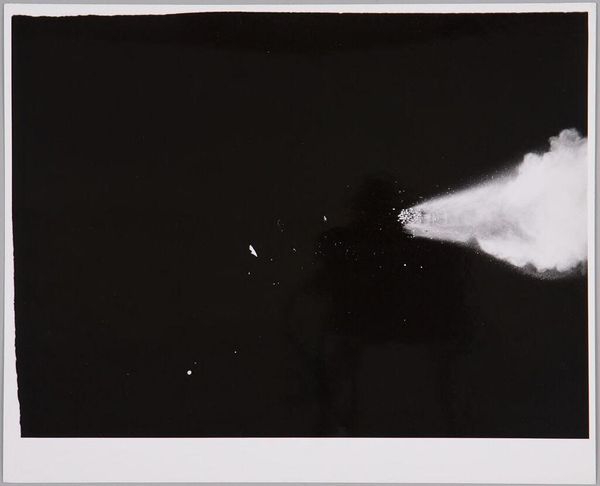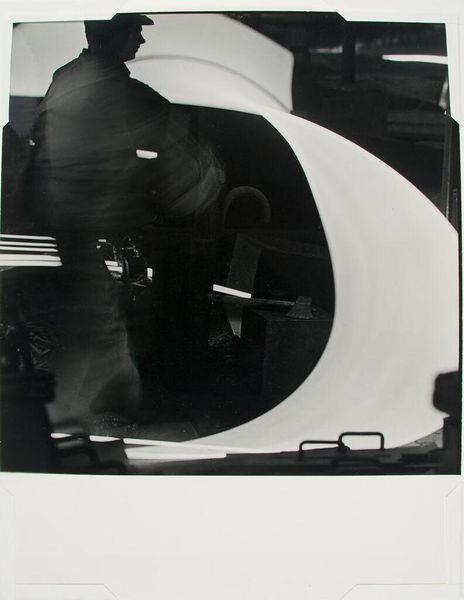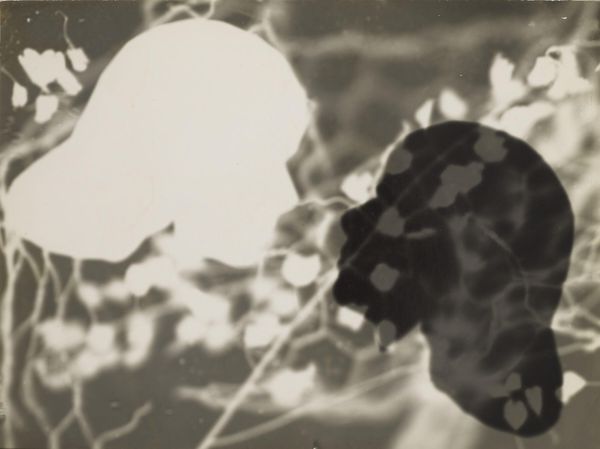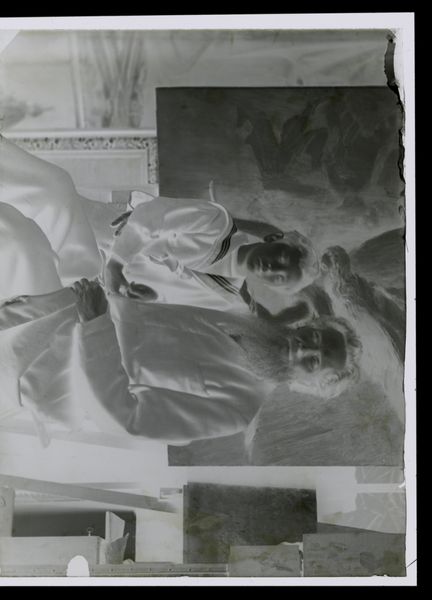
Dimensions: image: 650 x 1155 mm
Copyright: © Steven Pippin | CC-BY-NC-ND 4.0 DEED, Photo: Tate
Curator: At first glance, this photographic work by Steven Pippin, "Bath Tub Converted into a Pin-Hole Camera," presents a strangely ethereal scene. The stark, grayscale tones and fragmented composition create an unsettling effect. Editor: I agree. The process is central here. Pippin's transformation of an everyday object into a functioning camera subverts traditional notions of photographic equipment. Curator: Absolutely, it's a radical intervention, blurring the lines between domestic space and artistic process. The distorted perspective challenges our perception of reality. Editor: Consider also, the act of creating such a photograph inverts the power dynamic inherent in image-making. It's a quiet rebellion against the slickness of modern photography. Curator: It certainly shifts the focus from capturing to constructing, emphasizing the labor and material constraints of the photographic process. Editor: This piece invites us to question the social and cultural implications embedded within the act of seeing and being seen. It's a beautiful disruption.
Comments
tate 8 months ago
⋮
http://www.tate.org.uk/art/artworks/pippin-bath-tub-converted-into-a-pin-hole-camera-t07215
Join the conversation
Join millions of artists and users on Artera today and experience the ultimate creative platform.
tate 8 months ago
⋮
To make this work, Pippin overturned a bath tub and mounted it on a wooden stand. In complete darkness, he lined the bath with photographic papers and sealed the top, leaving only a pin-hole at the centre. He then lay naked on the bathroom floor while light flooded the room. The exposure time was ninety minutes. Pippin described this as a process which imitates 'the normal relationship with a bath, which is always one where we are naked and partially inactive for a period of time; floating in a secluded physical and mental space'. Gallery label, November 2002
